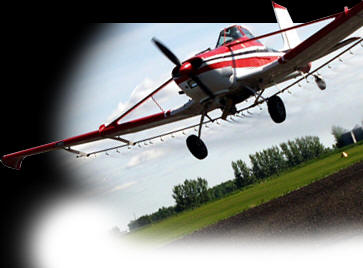

AGRICULTURAL PILOT
|
Nature of the Work. The agricultural pilot flies specially-designed aircraft (including helicopters) to apply herbicides, insecticides, seeds and fertilizers on crops, orchards, forests, fields, and swamps. Some jobs require aerial surveys of cattle and crops or fighting forest fires by dumping fire retardant materials. Working Conditions. These pilots fly at low levels with heavy loads, in a regular pattern over the ground avoiding trees, power lines, fences and other obstacles. Most flying is done during the early hours of the morning and again in early evening when the air is still. Takeoffs are often made from country roads and open fields close to the area to be treated. Work is seasonal, ranging from six to nine months in southern areas to two months in northern sections. The operator usually furnishes the aircraft, trained ground crews, and specialists who decide how the land is to be treated. The pilot works very close to poisonous liquids and chemicals and must wear protective clothing and masks. Where The Jobs Are. Agricultural pilots are in demand mostly in California and in the southern tier of states where the crop growing season is at its longest. |
 |
Many pilots follow the crops north as the season progresses, while others find work in northeastern and western states with extensive forest areas. Outlook For The Future. The number of agricultural operators in the U.S. has grown to 3,300, employing more than 25,000 people and operating some 9,000 aircraft, which make applications to more than 180 million acres of farmland each year. Experienced agricultural pilots continue to be needed.
| ŠAvStop Online Magazine Contact Us Return Home |